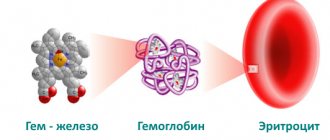Amylase is an enzyme that can break down carbohydrates. The enzyme produced by the pancreas is called pancreatic amylase. A test for its quantity is a study that is widely used in therapeutic practice. The biomaterial for research is venous blood. It must be taken on an empty stomach in the first half of the day. Before the study, you should not eat food, drink coffee or tea. The day before, it is recommended to limit your consumption of fatty and spicy foods.
Taking a blood test for pancreatic amylase is especially important if the patient has abdominal syndrome or severe pain.
What is this enzyme and what is it for?
Amylase is a digestive enzyme that helps break down carbohydrates. However, for proper operation, its level must be within normal limits.
Amylase begins to be produced when the body consumes starchy foods. These are potatoes, rice, baked goods, etc. There are alpha, beta and gamma types.
Urine and blood are tested to determine amylase levels, and tests are performed on the same day to eliminate errors.
Blood is taken from a vein early in the morning on an empty stomach. When a person seeks medical help, tests are carried out at any time, but in such cases it is necessary to take into account the time of day and the food that the patient eats.
What is dangerous about changes in amylase levels?
In itself, the condition when amylase is elevated does not have clinical consequences for the body, however, it is an important marker of pancreatic damage. If an increase in the enzyme index is detected, the analysis is usually monitored within 24 hours, which makes it possible to assess the dynamics of the pathological process.
A decrease in the level of the enzyme against the background of deterioration in the patient’s well-being indicates severe destruction of pancreatic tissue.
You should pay close attention to the situation. full list of questions ‹ Previous page | Next page >
Standards for adults and children
Strict alpha-amylase levels are prescribed and vary depending on the age of the person. Based on these indicators, the efficiency of the digestive system is assessed. The following indicators are considered normal:
- In a child from birth to 2 years – 5 – 65 U/l.
- From 2 to 70 years – 25 – 125 U/l.
- After 70 - 20 - 160 U/l.
Women and men have the same standards. Slightly elevated levels of amylase in the blood do not cause much concern among doctors. However, if the deviation from the norm is double or more, this indicates a serious disruption of the body’s functioning.
An elevated index often results in abdominal pain, so your doctor will order special diagnostic tests, including alpha-amylase testing, to find out the cause and diagnose it.
Normal values
Total amylase by age
- 0-30 days (newborn): 0-6 units/l;
- 31-182 days: 1-17 units/l;
- 183-365 days: 6-44 units/l;
- 1-3 years: 8-79 units/l;
- 4-17 years: 21-110 units/l;
- after 18 years (adults): 26-102 units/l.
Pancreatic amylase by age
- 0-24 months: 0-20 units/l;
- 2-18 years: 9-35 units/l;
- after 18 years: 11-54 units/l.
(Please note that reference intervals may vary between laboratories, so for blood and urine tests please refer to the intervals listed on the report).
Reasons for high rates
A slight increase in the index by a few points is often a temporary phenomenon, does not affect the general condition of the patient and goes away on its own.
Total amylase in the blood may increase due to increased work of the pancreas. The enzyme quickly enters the bloodstream.
This may happen for the following reasons:
- A large amount of digestive fluid is produced, which enters the duodenum.
- There are obstacles that prevent him from moving normally in the sewer.
- Inflammatory reactions occur in the pancreas and surrounding systems. Subsequently, tissue destruction may occur, which is necrotic in nature.
This is due to factors such as:
- Acute pancreatitis is inflammation of the pancreas. Most often diagnosed in adults. The organ’s own enzymes are disrupted, which enter the blood in large quantities and become dangerous to human life. The pathology can progress to pancreatic necrosis - death of the pancreas (complete or partial), accompanied by an infectious process in general and an inflammatory process in the abdominal cavity. This usually occurs in patients with alcoholism when amylase levels become 8 times higher than normal. The mortality rate is about 10-15%.
- Chronic pancreatitis is a disorder of the pancreas. The excess can be from 3 to 5 times.
- Cancerous tumors, and more often the head of the gland is affected. The enzyme content is 4 times higher than normal.
- The presence of stones in the kidneys or gall bladder and its ducts. Blockage of the pancreatic duct by a stone, metastasis or tumor.
- Peritonitis is an inflammation of the parietal and visceral peritoneum, accompanied by a severe general condition of the body. High levels of amylase are observed as a result of irritation of the gland, which begins to actively work.
- Renal failure is a disorder of kidney function. The ability to produce and excrete urine is impaired, so enzymes are retained in the body.
- Diabetes mellitus is a metabolic disorder. The rate of action of amylase increases because it is not consumed properly.
- Mumps is a viral disease characterized by fever, general intoxication and the development of inflammation of the salivary glands (inflammation of the salivary glands). Affects glandular tissues of other organs and the central nervous system. After recovery, the level returns to normal.
- Ovarian cancer in women.
- Stomach ulcer.
High amylase levels can occur in conditions such as:
- Abdominal trauma.
- Intestinal obstruction.
- Herpes virus.
- Intestinal ischemia.
- Acute appendicitis.
- Ectopic pregnancy.
- Ruptured aortic aneurysm.
- Postoperative complications.
- Macroamylasemia is a disease characterized by the presence of macroamylase in the blood.
- Genetic predisposition—impaired penetration of amylase into urine.
- Stressful situations.
Poor diet and alcohol abuse also increase amylase levels. The cause may also be uncontrolled use of certain medications.
Treatment of disorders
The only way to normalize amylase concentrations is to identify and eliminate the cause of the condition. A single biochemical blood test is usually not enough to accurately determine the disease, so patients require a comprehensive study. It includes ultrasound of the abdominal cavity, general blood test, endoscopic examination of the digestive system (for example, gastroduodenoscopy).
Based on the results, the doctor draws conclusions and begins to treat the pathology.
In some conditions (tumors, blockage of the bile ducts, necrosis of pancreatic tissue, peritonitis), patients require immediate surgical intervention.
The treatment regimen depends on the disease, severity of symptoms, age and general condition of the patient. In case of disturbances in the functioning of the pancreas and inflammation of the tissues of the organ, antibiotics and drugs are prescribed that reduce the load on the organ, reduce blood circulation and suppress the excessive production of enzymes. For diabetes mellitus, renal failure, cholelithiasis and other pathologies, other treatment regimens are prescribed aimed at reducing unpleasant symptoms and eliminating pathological processes.
Symptoms
Excessive levels of this enzyme are diagnosed in diseases of the pancreas and other internal organs and require therapy. The disease is accompanied by symptoms:
- Pain in the hypochondrium and epigastrium on the right. This symptom worsens after eating. After defecation, the pain goes away.
- Impaired passage of stool, diarrhea is more common, stool is released in small quantities. The reason is a violation of the contractile function of the intestine.
- Apathy, drowsiness.
- Reduced performance.
- Deterioration in sleep quality does not bring increased strength.
- Attractive pain in the lower abdomen during pregnancy.
A patient's visit to a doctor with the above symptoms often leads to hospitalization. In this case, it is necessary to identify the root cause of the illness.
Amylase and its role in the body
Amylase (alpha-amylase) is an essential enzyme that is involved in digestive processes and ensures the breakdown of carbohydrates. With its help, nutrients entering the body break down into starches and polysaccharides, after which they are absorbed into the blood, supporting metabolism and vital processes. The production of the substance occurs in the pancreas and salivary glands, and an analysis to determine its content is prescribed if organ diseases are suspected. An increase in indicators may indicate dangerous disorders that require immediate medical attention.
When are tests ordered?
In various pathologies, an increase in amylase in the blood is observed, while the amount of the enzyme in saliva does not increase.
The most accurate determination of the level is possible with a biochemical blood test. Prescribed in the following situations:
- Inflammation of the parotid gland resulting from mumps, blockage, etc.
- Viral, infectious pathologies.
- Diabetes.
- Acute pancreatitis.
- Cystic fibrosis is an inherited disease caused by a gene mutation that affects cellular salt metabolism.
The examination is indicated for acute abdominal pain, which usually indicates a malfunction of the gastrointestinal tract.
Decreased amylase concentration
The reasons for the decrease in enzyme concentration are usually hepatitis, occurring in acute or chronic form. With such diseases, disruptions in carbohydrate metabolism occur, which causes an increase in the load on the fermentation system and changes in the parameters of a biochemical blood test. The second reason for the decrease in the level of the substance is neoplasms of the pancreas.
Typically, tumor processes cause an increase in the concentration of amylase (especially in the initial stages), but after the degeneration of its tissues, the secretion of enzymes is disrupted. Due to organ injuries, intoxications of the body and poisoning, it is also possible for the enzyme concentration to change either down or up.
How to normalize an indicator
The production of amylase is an independent process in the body. In case of significant excess of its norm, it is necessary to carry out appropriate treatment, since this phenomenon negatively affects the patient’s condition and can be life-threatening.
Only an experienced specialist should prescribe the necessary therapy. Self-medication can not only be ineffective, but also lead to disastrous consequences.
Treatment measures can only be determined after research and an accurate diagnosis have been made. They should be aimed at eliminating the cause of the pathological condition.
To get rid of the underlying disease, a prescription for medications is written.
Treatment is prescribed individually, taking into account the age category, stage of the disease and the general condition of the patient.
Diet
For diabetes, pancreatitis, digestive tract disorders and other pathologies, you must follow a special diet. It is important to adjust your diet to reduce amylase levels.
The diet consists of the following elements:
- It is necessary to control the amount of protein entering the body.
- It is necessary to limit or exclude carbohydrates and fats from the diet as much as possible.
- It is important to avoid fried, spicy, salty, smoked, sour and alcoholic drinks. These products irritate the gastric mucosa.
- It is necessary to limit the intake of fiber into the body.
- It is not recommended to use marinades.
- You cannot eat onions, garlic and radishes.
- He should include in his diet a lot of fresh fruits and vegetables, natural juices and cereals.
- Fish and meat should be lean.
Food should be consumed in small portions 5-6 times a day.
Improper nutrition has a bad effect on the condition and function of the pancreas; following a diet can shorten the treatment period.
Prevention of amylase elevations
Prevention of pathologies associated with increased amylase involves proper lifestyle and diet. It is necessary to exclude spicy, fatty and fried foods, baked goods, coffee and alcohol from the diet. The menu should consist of cereal dishes, fruits and vegetables (with the exception of onions, garlic, radishes and sorrel), and boiled lean meat.
Food should be boiled, baked without oil or cooked in a slow cooker, and eaten in small portions - at least four to five times a day, in small portions. The basic principle of nutrition when amylase levels are elevated is to avoid prolonged hunger, but not to overeat. In addition, it is recommended to quit smoking, reduce stress if possible and engage in light physical activity.
If you are prone to disorders of the digestive tract and other organs, during which disruptions in the production of enzymes occur, you need to regularly undergo preventive examinations with a doctor and take tests.
Consequences
If persistent disturbances in enzyme levels are detected, competent and, most importantly, timely therapy should be carried out.
Failure to comply with this rule can lead to the following complications:
- Pathologies of the gallbladder and the formation of cholelithiasis (more common in women).
- Metabolic disorders.
- Development of anemia (anemia).
- Weight loss.
- Dry skin.
- Increased fragility of hair and nails.
- Development of diabetes mellitus.
When the stomach and intestines are not functioning, food is less easily digested and absorbed, resulting in flatulence, abdominal pain and diarrhea.
If a high level of the enzyme is detected, treatment and diet are urgently required. Thanks to this, you will get rid of unpleasant symptoms and remain healthy for a long time.
What to do if amylase is low?
Low levels of the enzyme are much less common than high levels. Such changes in the analysis are typical for pancreatic failure, cystic fibrosis, severe liver damage (liver failure), pancreaectomy (removal of the pancreas).
Increased blood cholesterol levels can lead to low pancreatic amylase levels. In children of the first year of life, the level of the enzyme is much lower than in adults. This is due to the fact that the food they receive is devoid of sufficient amounts of complex carbohydrates.










